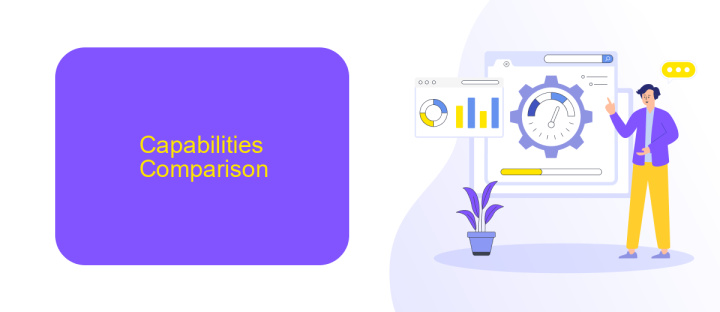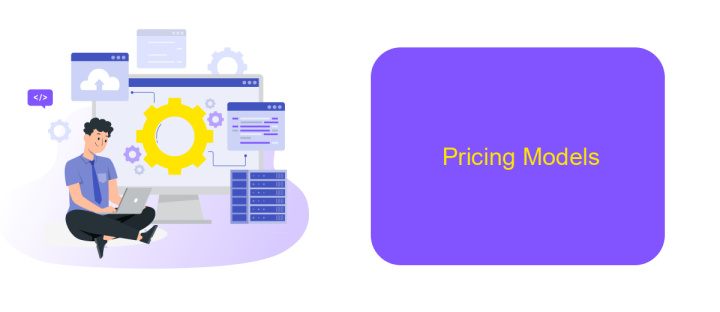MuleSoft Vs Fivetran
In today's data-driven world, businesses rely heavily on efficient data integration tools to streamline operations and gain insights. MuleSoft and Fivetran are two prominent players in this space, each offering unique capabilities. This article delves into a comparative analysis of MuleSoft and Fivetran, exploring their features, strengths, and use cases to help you make an informed decision.
Introduction
In today's rapidly evolving digital landscape, businesses are increasingly relying on data integration tools to streamline their processes and drive efficiency. Two prominent players in this space are MuleSoft and Fivetran, each offering unique capabilities to meet diverse integration needs.
- MuleSoft: Known for its robust API-led connectivity approach, MuleSoft provides comprehensive tools for building, deploying, and managing APIs and integrations.
- Fivetran: Specializes in automated data pipelines, enabling seamless data synchronization from various sources to your data warehouse with minimal maintenance.
Both MuleSoft and Fivetran cater to different aspects of data integration, making it crucial for businesses to understand their specific requirements before choosing a solution. Additionally, services like ApiX-Drive can further simplify the integration process by offering user-friendly tools to connect various applications and automate workflows without extensive technical expertise. This comparison aims to shed light on the strengths and weaknesses of MuleSoft and Fivetran, helping you make an informed decision for your integration needs.
Capabilities Comparison

MuleSoft and Fivetran offer distinct capabilities catering to different integration needs. MuleSoft is known for its comprehensive API-led connectivity approach, allowing businesses to design, build, and manage APIs seamlessly. It provides robust tools for creating complex integrations, facilitating real-time data synchronization, and ensuring high levels of security and governance. MuleSoft's Anypoint Platform offers extensive pre-built connectors and templates, making it suitable for large enterprises looking to integrate a wide range of applications and services.
Fivetran, on the other hand, specializes in automated data integration with a focus on simplicity and reliability. It excels in extracting, loading, and transforming (ELT) data from various sources into data warehouses, enabling efficient analytics and reporting. Fivetran's automated pipelines reduce the need for manual intervention, ensuring data is always up-to-date. For businesses seeking a straightforward, low-maintenance solution to integrate their data sources, Fivetran is a compelling choice. Additionally, services like ApiX-Drive can complement these platforms by offering no-code integration solutions, further simplifying the process of connecting disparate systems and enhancing overall operational efficiency.
Key Features

When comparing MuleSoft and Fivetran, it is essential to highlight their key features to understand their unique capabilities. Both platforms offer powerful integration solutions but cater to different needs and use cases.
- Data Integration: MuleSoft provides comprehensive data integration capabilities, allowing businesses to connect various applications, data sources, and APIs seamlessly. Fivetran, on the other hand, specializes in automated data pipelines, ensuring data is continuously synced from various sources to your data warehouse.
- API Management: MuleSoft excels in API management, offering a robust platform for designing, building, and managing APIs. This feature is crucial for businesses looking to create a connected ecosystem of applications and services. Fivetran does not focus on API management but rather on data extraction and loading.
- Ease of Use: Fivetran is known for its user-friendly interface and quick setup process, making it accessible for users with limited technical expertise. MuleSoft, while powerful, may require more technical knowledge and resources to implement effectively.
- Customization: MuleSoft offers extensive customization options, allowing businesses to tailor integrations to their specific needs. Fivetran provides a more standardized approach, which can be limiting for complex use cases but beneficial for straightforward data replication.
- Integration Automation: Services like ApiX-Drive can complement both MuleSoft and Fivetran by offering automation capabilities that simplify the integration process, reducing manual effort and increasing efficiency.
Ultimately, the choice between MuleSoft and Fivetran depends on your organization's specific integration needs and technical capabilities. MuleSoft is ideal for complex, API-driven integrations, while Fivetran excels in automating data pipelines for seamless data synchronization.
Pricing Models

When comparing pricing models for MuleSoft and Fivetran, it's essential to understand the unique approaches each platform takes. MuleSoft typically offers a subscription-based pricing model that scales based on the number of integrations, data volume, and additional features required. This allows businesses to customize their plans according to their specific needs.
Fivetran, on the other hand, adopts a consumption-based pricing model. This means that costs are determined by the amount of data processed, making it a flexible option for companies with varying data transfer needs. This model can be particularly advantageous for startups or businesses with fluctuating data volumes.
- MuleSoft: Subscription-based, scalable plans
- Fivetran: Consumption-based, pay-as-you-go pricing
Additionally, services like ApiX-Drive offer a more straightforward pricing structure for integration needs. ApiX-Drive provides a subscription model with different tiers based on the number of integrations and data volume, making it easier for businesses to predict costs. This can be a viable alternative for those looking for a cost-effective integration solution.
Conclusion
In conclusion, both MuleSoft and Fivetran offer robust solutions for data integration, yet they cater to different needs and preferences. MuleSoft provides a comprehensive platform with extensive customization options, making it ideal for enterprises with complex integration requirements. On the other hand, Fivetran focuses on simplicity and ease of use, appealing to businesses that prioritize quick deployment and automated data pipelines.
Choosing between MuleSoft and Fivetran ultimately depends on your specific business needs and technical capabilities. For those seeking a middle ground, services like ApiX-Drive can offer a versatile and user-friendly alternative, enabling seamless integration without extensive technical knowledge. By carefully evaluating your integration requirements, you can select the most suitable tool to enhance your data management and business processes.
- Automate the work of an online store or landing
- Empower through integration
- Don't spend money on programmers and integrators
- Save time by automating routine tasks
FAQ
What are the main differences between MuleSoft and Fivetran?
Which platform is better for real-time data integration?
Is coding required to use MuleSoft or Fivetran?
How do MuleSoft and Fivetran handle data transformations?
Are there any third-party services that can assist with the implementation of these platforms?
Time is the most valuable resource for business today. Almost half of it is wasted on routine tasks. Your employees are constantly forced to perform monotonous tasks that are difficult to classify as important and specialized. You can leave everything as it is by hiring additional employees, or you can automate most of the business processes using the ApiX-Drive online connector to get rid of unnecessary time and money expenses once and for all. The choice is yours!


